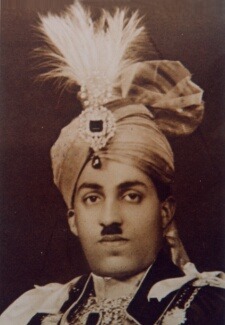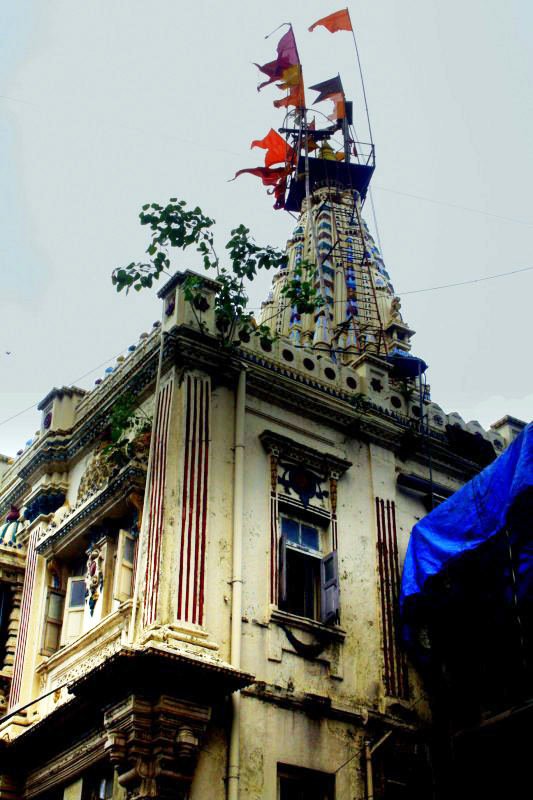|
Nawabs Of Murshidabad
The Nawab Bahadur of Murshidabad ( bn, মুর্শিদাবাদের নবাব বাহাদুর), or simply known as the Nawab of Murshidabad, was a hereditary title of Bengal akin to Western peerage. They were direct descendants of the former Nawabs of Bengal, who were the de facto rulers of Bengal (along with Bihar and Orissa), and inherited their estates and property. The inaugural holder was Hassan Ali Mirza. After the death of Waris Ali Mirza in 1969, the title was held in abeyance and later abolished. In August 2014, the Indian Supreme Court ruled that his nephew, Abbas Ali Meerza, was a rightful heir of the Nawabs of Murshidabad. History The title Nawab of Murshidabad was used an alternative for the Nawabs of Bengal, as they were based in the city of Murshidabad, founded by the inaugural Nawab of Bengal Murshid Quli Khan. The title continued to be used synonymously until the time of Nawab Mansur Ali Khan, who was the last titular Nawab Nazim of Bengal. ... [...More Info...] [...Related Items...] OR: [Wikipedia] [Google] [Baidu] |
Nawab
Nawab (Balochi: نواب; ar, نواب; bn, নবাব/নওয়াব; hi, नवाब; Punjabi : ਨਵਾਬ; Persian, Punjabi , Sindhi, Urdu: ), also spelled Nawaab, Navaab, Navab, Nowab, Nabob, Nawaabshah, Nawabshah or Nobab, is a Royal title indicating a sovereign ruler, often of a South Asian state, in many ways comparable to the western title of Prince. The relationship of a Nawab to the Emperor of India has been compared to that of the Kings of Saxony to the German Emperor. In earlier times the title was ratified and bestowed by the reigning Mughal emperor to semi-autonomous Muslim rulers of subdivisions or princely states in the Indian subcontinent loyal to the Mughal Empire, for example the Nawabs of Bengal. The title is common among Muslim rulers of South Asia as an equivalent to the title Maharaja. "Nawab" usually refers to males and literally means ''Viceroy''; the female equivalent is " Begum" or "''Nawab Begum''". The primary duty of a Nawab wa ... [...More Info...] [...Related Items...] OR: [Wikipedia] [Google] [Baidu] |
Dominion Of India
The Dominion of India, officially the Union of India,* Quote: “The first collective use (of the word "dominion") occurred at the Colonial Conference (April to May 1907) when the title was conferred upon Canada and Australia. New Zealand and Newfoundland were afforded the designation in September of that same year, followed by South Africa in 1910. These were the only British possessions recognized as Dominions at the outbreak of war. In 1922, the Irish Free State was given Dominion status, followed by the short-lived inclusion of India and Pakistan in 1947 (although India was officially recognized as the Union of India). The Union of India became the Republic of India in 1950, while the became the Islamic Republic of Pakistan in 1956.” was an independent dominion in the British Commonwealth of Nations existing between 15 August 1947 and 26 January 1950. Until its independence, India had been ruled as an informal empire by the United Kingdom. The empire, also called the Britis ... [...More Info...] [...Related Items...] OR: [Wikipedia] [Google] [Baidu] |
Radcliffe Line
The Radcliffe Line was the boundary demarcated between the Indian and Pakistani portions of the Punjab Province and Bengal Presidency of British India. It was named after Cyril Radcliffe, who, as the joint chairman of the two boundary commissions for the two provinces, had the ultimate responsibility to equitably divide of territory with 88 million people. The demarcation line was published on 17 August 1947 upon the Partition of British India. Today, its western side of the line is part of the India–Pakistan border while its eastern side serves as the Bangladesh–India border. Background Events leading up to the Radcliffe Boundary Commissions On 18 July 1947, the Indian Independence Act 1947 of the Parliament of the United Kingdom stipulated that British rule in India would come to an end just one month later, on 15 August 1947. The Act also stipulated the partition of the Presidencies and provinces of British India into two new sovereign dominions: India and Paki ... [...More Info...] [...Related Items...] OR: [Wikipedia] [Google] [Baidu] |
Flag Of Pakistan
The flag of Pakistan ( ur, ) traces its current form back to a meeting of the Constituent Assembly of Pakistan on 11 August 1947, three days before the Partition of British India, when it was adopted by the All-India Muslim League as the official flag-to-be of the Dominion of Pakistan. It was retained upon the establishment of a constitution in 1956, and remains in use as the national flag for the present-day Islamic Republic of Pakistan. The flag is made up of a green field with a stylized tilted white crescent moon and five-pointed star at its centre, and a vertical white stripe at its hoist-end. Though the specific shade of green on the flag is mandated only as 'dark green', its official and most consistent representation is in Pakistan green, which is shaded distinctively darker. Most notably, the flag is referred to in the third verse of Pakistan's national anthem, and is widely flown on several important days of the year, including Republic Day, Independence Day and De ... [...More Info...] [...Related Items...] OR: [Wikipedia] [Google] [Baidu] |
Partition Of India
The Partition of British India in 1947 was the Partition (politics), change of political borders and the division of other assets that accompanied the dissolution of the British Raj in South Asia and the creation of two independent dominions: Dominion of India, India and Dominion of Pakistan, Pakistan. The Dominion of India is today the India, Republic of India, and the Dominion of Pakistan—which at the time comprised two regions lying on either side of India—is now the Pakistan, Islamic Republic of Pakistan and the Bangladesh, People's Republic of Bangladesh. The partition was outlined in the Indian Independence Act 1947. The change of political borders notably included the division of two provinces of British India, Bengal Presidency, Bengal and Punjab Province (British India), Punjab. The majority Muslim districts in these provinces were awarded to Pakistan and the majority non-Muslim to India. The other assets that were divided included the British Indian Army, ... [...More Info...] [...Related Items...] OR: [Wikipedia] [Google] [Baidu] |
Pakistan Movement
The Pakistan Movement ( ur, , translit=Teḥrīk-e-Pākistān) was a political movement in the first half of the 20th century that aimed for the creation of Pakistan from the Muslim-majority areas of British India. It was connected to the perceived need for self-determination for Muslims under British rule at the time. Muhammad Ali Jinnah, a barrister and politician led this movement after the Lahore Resolution was passed by All-India Muslim League on March 23rd, 1940 and Ashraf Ali Thanwi as a religious scholar supported it. Thanwi's disciples Shabbir Ahmad Usmani and Zafar Ahmad Usmani were key players in religious support for the creation of Pakistan. The Pakistan Movement started originally as the Aligarh Movement, and as a result, the British Indian Muslims began to develop a secular political identity. Soon thereafter, the All India Muslim League was formed, which perhaps marked the beginning of the Pakistan Movement. Many of the top leadership of the moveme ... [...More Info...] [...Related Items...] OR: [Wikipedia] [Google] [Baidu] |
Nawab Of Dhaka
The Nawab of Dhaka ( Bengali: "ঢাকার নবাব"), originally spelt in English Nawab of Dacca, was the title of the head of largest Muslim zamindar in British Bengal and Assam, based in present-day Dhaka, Bangladesh. The title of ''nawab'', similar to the British peerage, was conferred upon the head of the family by Queen Victoria as a recognition of the first Nawab's loyalty and contribution to the social welfare activities. Although the Nawabs of Dhaka were not sovereigns, they played an essential role in the politics of South Asia—and the relations with external entities. The family was proprietary of the Dhaka Nawab estate, seated at Ahsan Manzil palace. "Nawab of Dhaka" was the title of the head of family and estate from 1843. Khwaja Alimullah was the first holder of the title, and Khwaja Abdul Ghani was the first Nawab of Dhaka when the title was made hereditary by Queen Victoria. Considerable infighting within the Nawab's family gradually led to the declin ... [...More Info...] [...Related Items...] OR: [Wikipedia] [Google] [Baidu] |
Zamindar
A zamindar (Hindustani: Devanagari: , ; Persian: , ) in the Indian subcontinent was an autonomous or semiautonomous ruler of a province. The term itself came into use during the reign of Mughals and later the British had begun using it as a native synonym for “estate”. The term means '' land owner'' in Persian. Typically hereditary, from whom they reserved the right to collect tax on behalf of imperial courts or for military purposes. During the period of British colonial rule in India many wealthy and influential zamindars were bestowed with princely and royal titles such as ''maharaja'' ( great king), ''raja/ rai'' (king) and '' nawab''. During the Mughal Empire, zamindars belonged to the nobility and formed the ruling class. Emperor Akbar granted them mansabs and their ancestral domains were treated as jagirs. Some zamindars who were Hindu by religion and brahmin or kayastha or kshatriya by caste were converted into Muslims by the Mughals. During the coloni ... [...More Info...] [...Related Items...] OR: [Wikipedia] [Google] [Baidu] |
British Raj
The British Raj (; from Hindi language, Hindi ''rāj'': kingdom, realm, state, or empire) was the rule of the British The Crown, Crown on the Indian subcontinent; * * it is also called Crown rule in India, * * * * or Direct rule in India, * Quote: "Mill, who was himself employed by the British East India company from the age of seventeen until the British government assumed direct rule over India in 1858." * * and lasted from 1858 to 1947. * * The region under British control was commonly called India in contemporaneous usage and included areas directly administered by the United Kingdom of Great Britain and Ireland, United Kingdom, which were collectively called Presidencies and provinces of British India, British India, and areas ruled by indigenous rulers, but under British British paramountcy, paramountcy, called the princely states. The region was sometimes called the Indian Empire, though not officially. As ''India'', it was a founding member of the League of Nations, a ... [...More Info...] [...Related Items...] OR: [Wikipedia] [Google] [Baidu] |
Bombay
Mumbai (, ; also known as Bombay — the official name until 1995) is the capital city of the Indian state of Maharashtra and the '' de facto'' financial centre of India. According to the United Nations, as of 2018, Mumbai is the second-most populous city in India after Delhi and the eighth-most populous city in the world with a population of roughly 20 million (2 crore). As per the Indian government population census of 2011, Mumbai was the most populous city in India with an estimated city proper population of 12.5 million (1.25 crore) living under the Brihanmumbai Municipal Corporation. Mumbai is the centre of the Mumbai Metropolitan Region, the sixth most populous metropolitan area in the world with a population of over 23 million (2.3 crore). Mumbai lies on the Konkan coast on the west coast of India and has a deep natural harbour. In 2008, Mumbai was named an alpha world city. It has the highest number of millionaires and billionaires among al ... [...More Info...] [...Related Items...] OR: [Wikipedia] [Google] [Baidu] |





.jpg)


